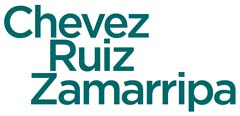The Influence of the Three-Circle Model of the Family Business System in Today’s Wealth Management in Mexico
Over the last couple of years, digital assets presence has grown exponentially – mainly due to their rise during the COVID-19 pandemic – and regular investors and common individuals consider that this new type of assets are no longer a far-fetched idea and must be taken into consideration as important assets in which investors can set their eyes into, and more importantly, their money.
In this article, we will give a general overview of digital assets, their uses and considerations when part of wealth management structures, how are they regulated and their trends going into 2023, but first, we need to understand what digital assets are and where did they come from.
What are digital assets?
Digital assets are any type of data or content that exist in digital form and can be stored, accessed or transferred electronically. This definition includes anything from digital documents, audible content, images, movies and any other digital data in circulation or stored in digital appliances, such as computers, laptops, tablets, data storage devices and anything else that may exist.
So far, with this broad definition of “digital assets”, it would be difficult to think that digital assets could be considered as an important investment instrument, however, this changed with the introduction of blockchain.
A blockchain is a decentralized “distributed ledger” formed by linking together individual blocks of transaction data that is securely linked together via cryptographic hashes, that is, algorithms used to verify the validity of data in order to secure information. A hash converts any input of arbitrary length into an encrypted output of a fixed length, thus, regardless of the original amount of data or file size involved, the created hash will always have the same size. This complex process is done “manually” by users in a process called “mining” and is used to secure information contained in a blockchain, as each block header contains the previous block’s hash and, as such, users can verify that the blockchain have not been altered. This is enhanced by the fact that once a block has been “closed” it cannot be altered.
The introduction of blockchain revolutionized the digital asset market. As users were now able to verify the validity of digital assets and verify that they have not been altered, users started to create different types of digital assets that could be commercialized, such as:
- Cryptocurrencies: cryptocurrencies are digital currencies that use cryptography designed to work as a medium of exchange, store of value and unit of account. This type of currencies are not backed by a physical asset (such as gold) or reliant to any central authority (such as central banks or governments). As they rely on blockchain, the cryptocurrency verification relies exclusively on the users of the blockchain environment, eliminating the need of any intermediary and, more importantly, of the intermediary fees usually charged by the banks and financial institutions standard financial transactions. The most famous example of this type of digital asset is Bitcoin.
- Non-Fungible Tokens or NFTs: Non-Fungible Tokens or NFTs, as they are more commonly identified, is a digital asset that represents ownership or proof of authenticity for a unique item or piece of content. NFTs are called “non fungible” because, unlike cryptocurrencies like Bitcoin, they are unique digital identifiers that cannot be copied, substituted, subdivided or interchangeable on a one-to-one basis. The introduction of blockchain allowed the monetization of NFTs, allowing its owners to transfer the ownership of their NFTs, and thus opening a market for the purchase and sale NFTs. This digital asset gained popularity during the COVID-19 pandemic, due to the sale of digital art NFTs at high prices, for instance, in 2021 an NFT, “Everydays: the First 5000 Days”, by the artist Beeple, sold for about 69.3 million dollars at a public auction.
Image of “Everydays: the First 5000 Days”, a digital work of art created by the artist “Beeple”, which is considered as the most expensive NFT ever sold at a public auction.
- Security Tokens: digital assets issued on a blockchain platform that meet the definition of security or financial investment (such as stocks or bonds), pursuant to the regulation of any given country. Security tokens are mostly unregulated around the word but are considered as securities or financial investments due to broad interpretations of the law. This form of digital assets is normally associated with tokenized versions of real word assets, such as real estate, stocks and bonds.
Trading Digital Assets
Unlike normal assets which are usually traded via financial institutions or traditional intermediaries, digital assets seek to eliminate the need to use any type of intermediaries (such as brokerage firms, exchanges or banks), and most importantly, to eliminate any intermediary fees originated thereof. This is what is commonly known as Decentralized Finance or DeFi.
DeFi is based in the use of smart contracts formalized via the blockchain in order to eliminate the need of any third-party to validate and carry out any transaction. Smart contracts are self-executing contracts with the terms of the agreement directly written into code that are validated in a blockchain through the mining process previously described (thus, the blockchain replaces the intermediary functions). Smart contracts allow for the automatic execution of contractual terms when predefined conditions are met. Due to the complex nature of this process, only blockchain specific platforms, such as Ethereum, support smart contracts.
Although the fact that no intermediary is needed can seem attractive to investors, it is important to take into account that the lack of a regulated intermediary and the use of blockchain can have its drawbacks, as all transactions registered on a blockchain cannot be altered, DeFi transactions are final and cannot be reverted and may be subject to hacking.
As any other financial instrument, investing in digital assets depends on the risk aversion of any particular investor. The main reasons as to why someone would be looking to invest in digital assets would be the following:
- Diversification of the investment portfolio;
- High investment return, associated with the high risk of the investment;
- Belief on the new blockchain technology;
- Loss of confidence in the traditional monetary system.
What are the risks of trading with Digital Assets?
Even though investing in digital assets seems like a good investment due to their high return, there are several risks that an investor must consider before investing their money into digital assets:
- Digital assets value is highly volatile. During the last couple of years, the value of cryptocurrencies such as Bitcoin and Ethereum have reached important highs only for their value to plumber a few weeks later. The lack of involvement of traditional players such as stock exchanges and financial institutions also means that digital assets are traded 24/7, fomenting this volatility.
- As most digital assets are not backed up by a physical asset (with the exception of security tokens), the value of digital assets do not represent the real market value of the asset itself, as the price is mainly based on speculation.
- As owner of a digital asset, it could prove to be difficult to assign a value to the asset itself, as there is no consensus on a valuation method.
- The market of digital assets is not mature when compared to traditional financial markets, and while the digital asset market has grown substantially over the past years, it is much smaller than traditional financial markets.
- Due to the lack of regulation, digital assets are not regulated or backed up by any government. This is an important risk to be considered, as digital assets platforms are not overseen and are not subject to the minimum control that banks, and other financial institutions are subject to. This has led to the closure of several platforms without any way of backing the investors’ money.
- Digital assets transactions are final due to the nature of blockchain, that means that transactions cannot be undone in the event of an error.
- Digital asset markets are still susceptible to various security risks, including hacking, fraud and smart contract vulnerabilities which can hinder market maturity.
Where is all of this going?
Due to the boom of digital assets during the COVID-19 Pandemic, especially the trading of cryptocurrencies such as Bitcoin, several governments have sought to introduce new legislation in order to regulate the trading of digital assets.
Although some countries have already started, we should not expect to have a very robust regulation on the short term, as a more robust legislation needs time in order to assess the technological and technical aspects of digital assets trading.
Rather than regulating all types of digital assets, the governments will seek to identify which digital assets should be considered as securities regulated under the current laws. This should impose some level of surveillance over certain type of companies that trade certain digital assets on a regular basis and is something that players in the digital asset market should be on the look in the next couple of years.
Digital Assets in Wealth Management
To consider the impact of digital assets in wealth management, it is important to take into account that investors and the public in general are always on the look for new investment opportunities and, as digital assets are here to stay, wealth managers, investors and the public in general looking to manage their money through investments are interested in participating in this new market and not be left behind.
Although a popular topic right now, investments in digital assets, and therefore, planning for purposes of wealth management around these, should be done with caution due to the volatility of the market. It is important to consider the risk tolerance of beneficiaries and the potential impact of price fluctuations on the overall value of the estate.
When families create a wealth management structure for a long term, they should look out for legal risks and uncertainties that may arise due to the lack of regulation of digital assets. For instance, in some countries (such as Mexico), financial institutions cannot buy, sell or in any way trade with digital assets. Said prohibition can be considered as a barrier for trusted financial institutions to provide their clients with wealth management services that include digital assets.
Moreover, ownership, management and transfer of digital assets via traditional legal institutions may prove difficult due to the lack of modernization of applicable laws. For instance, legal title of tokenized assets may be difficult to prove under current laws, for example, in certain countries, the transfer of real estate must follow certain formalities, thus making it impossible to acquire digital tokens that represent rights over a real estate property.
Regarding the transfer of digital assets through succession, it can be a complex process due to the unique characteristics of digital assets and the decentralized nature of blockchain technology. Digital assets are accessed using private keys, therefore ensuring that the intended beneficiary has access to the private keys while maintaining their security can be challenging. Therefore, when considering the transfer of digital assets through succession, it is recommended to include in the will or transfer agreement, the keys to access ownership over such assets, without exposing such keys or sensitive information to unauthorized parties. Certain technological knowledge to handle digital assets is strongly recommended, therefore consider providing beneficiaries with guidance on management of digital assets or appoint a trusted expert to assist.
Tax implications associated with digital assets may vary depending on the jurisdiction. Inheritance taxes, capital gains taxes, and other tax obligations should be considered as part of the estate planning process. Additionally, the volatile nature of digital assets can make it difficult to determine their value at the time of a testator’s death and may be subject to various tax implications which should be considered during the transfer process.
As the legal framework around the world continues to catch up with these issues, management of certain digital assets could prove difficult. Therefore, advice of legal and tax experts is necessary to understand applicable regulations and the risks that may arise from the investment and transfer of digital assets in estate planning.
Co-authors:
Alfredo Sanchez
Ana Sofia Rios
Jimena Gonzales de Cossio
Isabel Nuñez






